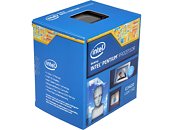Raevenlord
News Editor
- Joined
- Aug 12, 2016
- Messages
- 3,755 (1.20/day)
- Location
- Portugal
| System Name | The Ryzening |
|---|---|
| Processor | AMD Ryzen 9 5900X |
| Motherboard | MSI X570 MAG TOMAHAWK |
| Cooling | Lian Li Galahad 360mm AIO |
| Memory | 32 GB G.Skill Trident Z F4-3733 (4x 8 GB) |
| Video Card(s) | Gigabyte RTX 3070 Ti |
| Storage | Boot: Transcend MTE220S 2TB, Kintson A2000 1TB, Seagate Firewolf Pro 14 TB |
| Display(s) | Acer Nitro VG270UP (1440p 144 Hz IPS) |
| Case | Lian Li O11DX Dynamic White |
| Audio Device(s) | iFi Audio Zen DAC |
| Power Supply | Seasonic Focus+ 750 W |
| Mouse | Cooler Master Masterkeys Lite L |
| Keyboard | Cooler Master Masterkeys Lite L |
| Software | Windows 10 x64 |
"Nothing Really Ends" is the title of a song from dEUS, a Belgian "art-rock" band. And it would seem this applies all too well to the world of technology too. Intel has issued a Product Change Notification (PCN) which has changed the previously dead and buried, Haswell-era, 22 nm Pentium G3420 from its "Discontinued" status back to a worded "canceling this Product Discontinuance completely per new roadmap decision and enabling the product long term once again." Which means the Pentium G3420 will have a new lease of life, and will be available to customers until May 2020, with final shipments on December of the same year.
This is clearly an attempt from Intel to increase part availability for OEMs and system manufacturers, who have already been quoted as considering AMD due to both increases in performance and efficiency in their processors, as well as constrained supply from Intel, with giant Dell already having pointed the finger at Intel as a cause for their lower than expected revenue.

This 22 nm part won't break any records, and will likely only be of interest to the lowest tier systems - which will, anyway, move some demand from the 14 nm node back this 22 nm one, enabling Intel to produce more of the higher revenue, higher performance solutions on that node. Of course, why would any system integrator build a system with this CPU instead of AMD's Athlon 3000G is anyone's guess (it won both our Great Value and Highly Recommended awards, so it's not a guess for us here at TPU). Care to make yours in the comments?
View at TechPowerUp Main Site
This is clearly an attempt from Intel to increase part availability for OEMs and system manufacturers, who have already been quoted as considering AMD due to both increases in performance and efficiency in their processors, as well as constrained supply from Intel, with giant Dell already having pointed the finger at Intel as a cause for their lower than expected revenue.

This 22 nm part won't break any records, and will likely only be of interest to the lowest tier systems - which will, anyway, move some demand from the 14 nm node back this 22 nm one, enabling Intel to produce more of the higher revenue, higher performance solutions on that node. Of course, why would any system integrator build a system with this CPU instead of AMD's Athlon 3000G is anyone's guess (it won both our Great Value and Highly Recommended awards, so it's not a guess for us here at TPU). Care to make yours in the comments?
View at TechPowerUp Main Site




